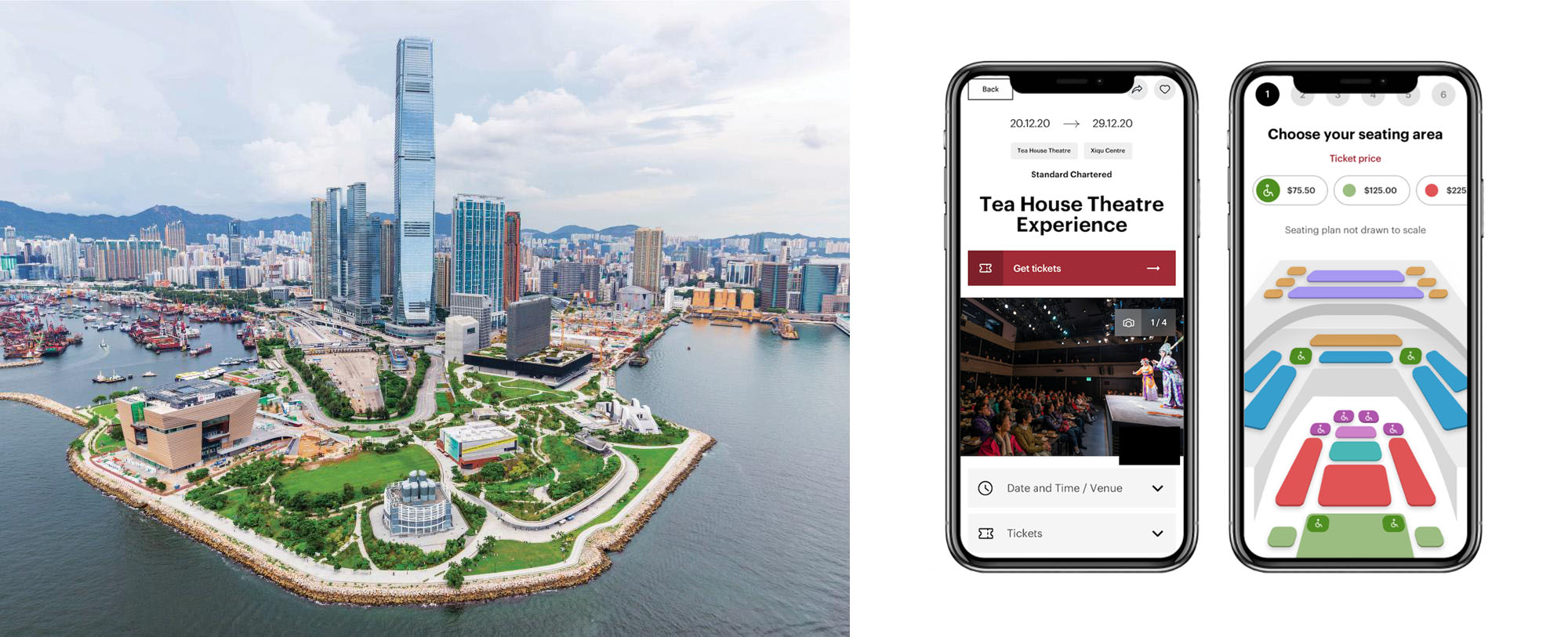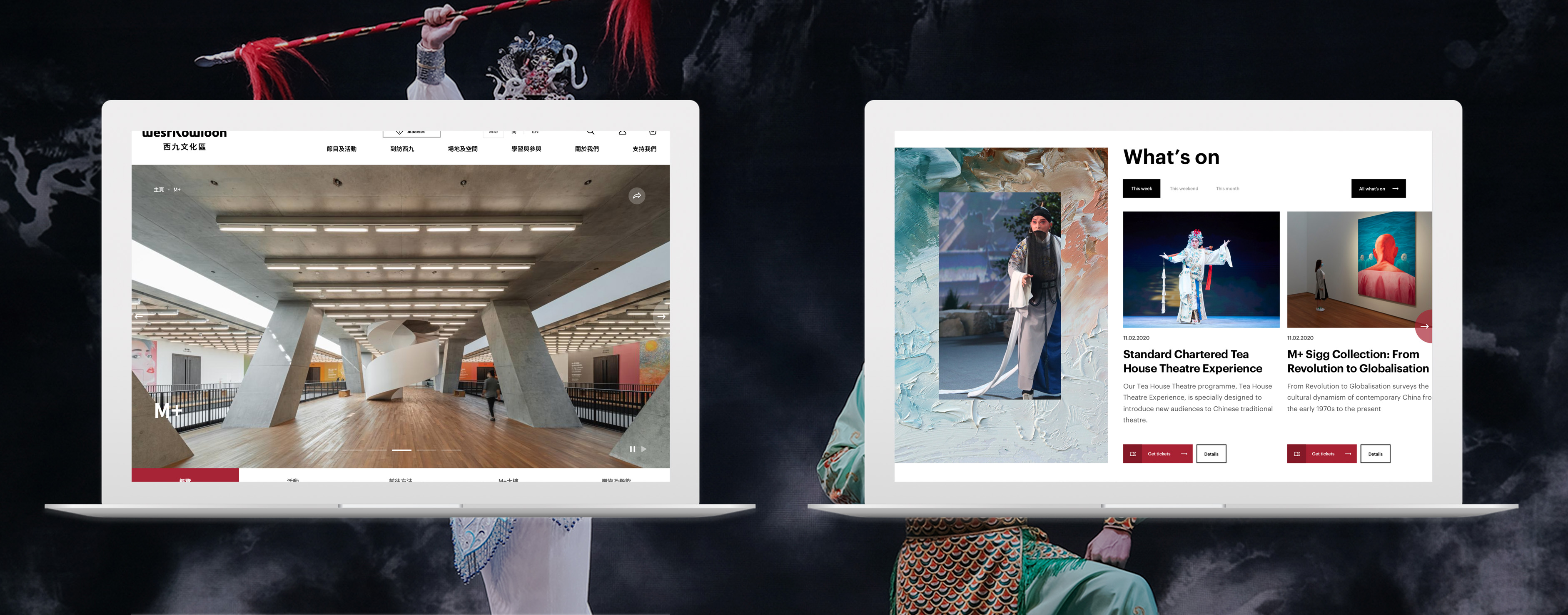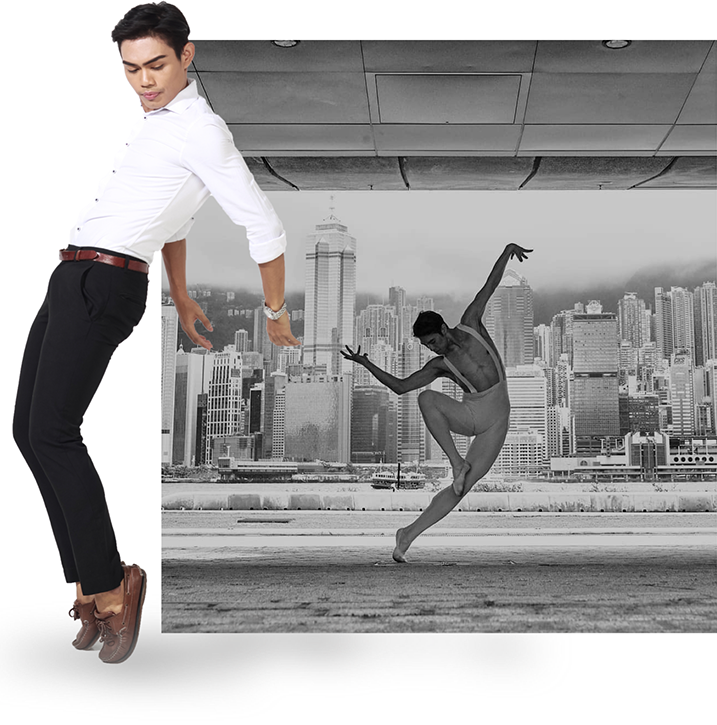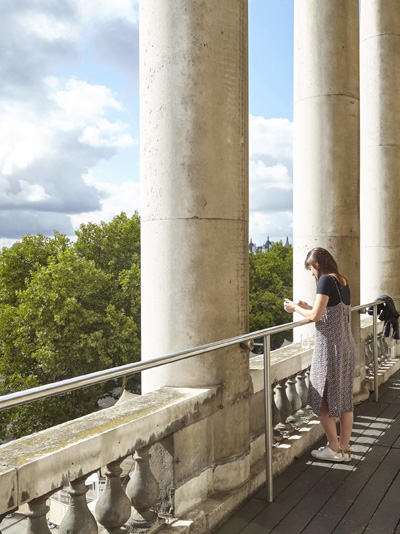West Kowloon
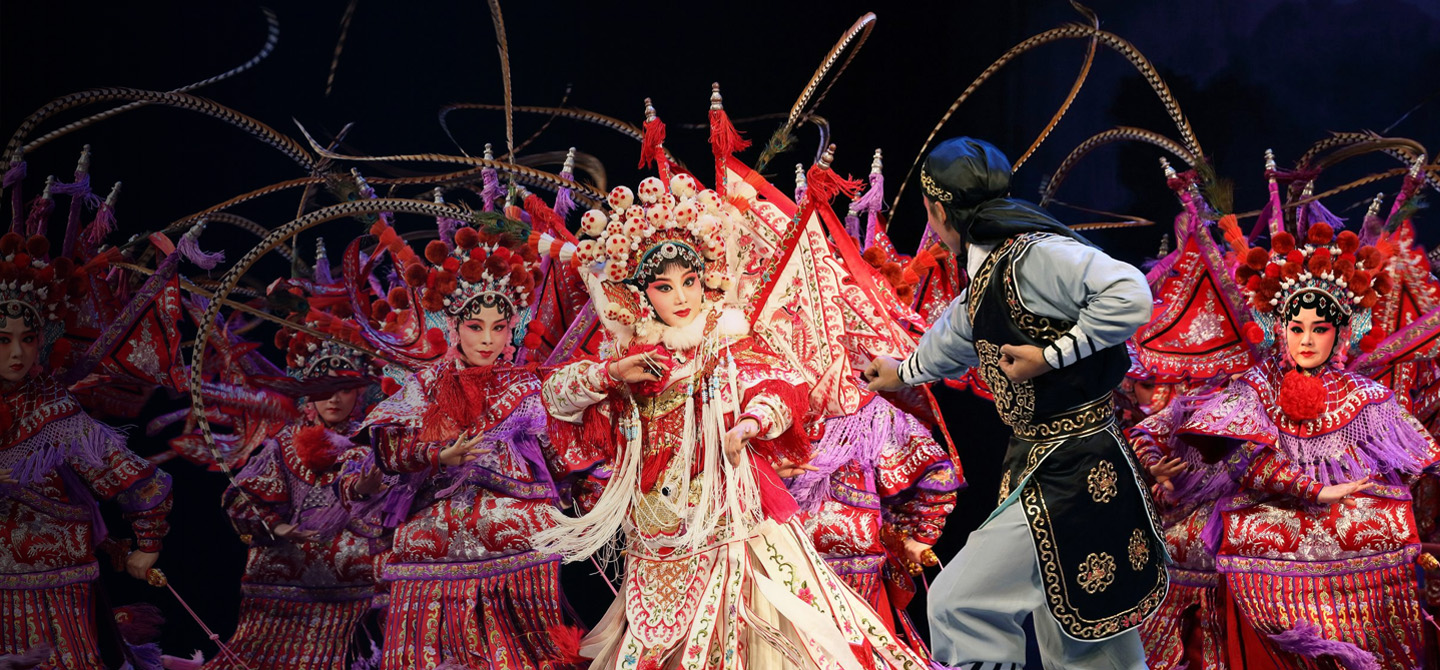
The clientanchor
The West Kowloon Cultural District (西九文化區) is a collection of world-class arts and cultural venues in Hong Kong
The West Kowloon Cultural District is a collection of world-class arts and cultural venues in Hong Kong and the largest district dedicated to culture anywhere in the world. Situated beside Hong Kong harbour on 40 hectares of purpose built parklands, it is made up of around 20 distinct venues including an opera house, multiple museums, theatres, galleries and auditoriums.
The challengeanchor
The district is a collection of disparate elements that needed to be designed in a way which formed a cohesive experience for visitors
The designers and architects of the space wanted it to blend in seamlessly with the rest of the city and reflect the intense life of the busy streets of Hong Kong.
These physical and environmental design challenges were the same challenges faced in the design and build of the website: how to reflect this atmosphere so particular to Hong Kong? How to present the diversity of the offer of the different venues? How to meet the needs of district-wide users, each with a very different purpose.
Selling tickets to events was a key function of the website. The design needed to make it easy for users to browse and discover the district's diverse event offerings.
The wide variety of booking variations also presented significant challenges: some events are seated, some are partially seated depending on the section of the venue, and some are not seated at all. Some are exhibitions, others are outdoor shows.
The district also attracts the biggest names in Asian entertainment and some shows sell out in minutes with very high demand for tickets which meant the site had to be built for speed, reliability and scalability. The huge variety of venues resulted in the need for complex and varied “purchase path” scenarios like seated or unseated venues, free versus paid events etc.
Editorially the site had to be built to allow 100’s of contributing editors each with distinct permissions to various areas of the offering. All content is available in 3 different languages with the potential to add more if the need arises.
The solutionanchor
It became apparent from very early on in our discovery phase that we needed to gain a very detailed understanding of the structure of the district and its different components in order to be able to design and create a user-friendly experience. We mapped the organisation of the district and identified the different business and user needs. We opted for a content strategy centered around progressive discovery as the user navigates around the site offering various suggestions to other areas of the district that were likely to be of interest to them based on their browsing patterns. We introduced curated “Itineraries” for those users who were time-limited and had little knowledge of the district's offerings.
The chosen design was a nuanced balance between modernity and tradition, reflecting both the ambition of the district and its concern to preserve its heritage.
In order to satisfy all of the different combinations of booking types and venues we built highly custom purchase paths tightly integrated with the ticketing system used by the client, SISTIC. Every venue was given its own profile which was then subdivided into sections each having different seating options as well as its own vending mode.
“Hot shows” - those events which are so popular that they sell out in minutes - were a particular challenge for which we introduced automated seat selection.
For these we also used Queue IT, a virtual waiting room, to handle the high traffic volumes. An administrator can activate a queue on any page to control the number of people allowed into the waiting room. On the infrastructure side, the purchase path can be scaled independently to the rest of the site so that West Kowloon can cope with high sales events.
The purchase path is integrated via First Data which provides Unionpay, Mastercard, Visa and American Express options.
Outcomesanchor
Right after going live, historical bounce rates were reduced significantly from 25% to 4%. A recent detailed journey analysis shows that the new landing pages are performing well, with users clicking through to explore the new content available to them. From the venue pages, users explore current events or click on restaurant pages related to the venue.
The user journey has also lengthened, particularly in terms of the number of page views per session (+40%) but also the duration of a session (+30%). All of this resulted in increased conversions.
Right after going live, our bounce rate dropped significantly from 25% to 4%
Eugene Lo
Head of Digital at West Kowloon District Authority
Technically the client wanted advanced functionalities to manage the creation of content by the various teams managing the Venues and the Museums. We chose Drupal 9 for its extended functionality in terms of workflow and we designed a modular content creation system to meet the needs of all contributors.
A piece of content is initiated by the web team and is assigned to an editorial team made up of a content owner and editors. Editors prepare the content and push it back to the content owner when ready. The content owner can make comments thanks to a tool integrated into Drupal and ask editors to rework the content if needed. Each type of user has dashboards listing the tasks to be performed. At any time, each editor therefore knows what they have to do and the deadlines to complete their work. The site is also multilingual English / Traditional Chinese / Simplified Chinese with translation and publication controlled by a semi-automated workflow. Content is created in English and Traditional Chinese by the editorial teams. The Simplified Chinese version is automatically translated with Google Translate via API. A screen allows the editors to view the 3 versions side by side to ensure the quality of the translation. External users, such as the artists themselves, can also participate in the content creation process. This was made possible thanks to the hybrid implementation of roles either integrated with the client's Active directory or internal to Drupal.
We chose to implement a decoupled architecture with a single CMS to manage the content, which was then redistributed via an integration layer to the website, the mobile applications and the digital signage present in the Venues. This 3 layer architecture also makes it possible to have a centralised database and to physically host the site in multiple places (Hong Kong, and mainland China). The central database can also send different content depending on the country where the site is hosted to suit the local audience. The integration layer also serves as a pivot for the integration of external APIs such as the parking API or to push data to third-party tools such as Salesforce
Get in Touch
Got a similar project? Contact Us to discover how our team can help you transform your digital channels.
